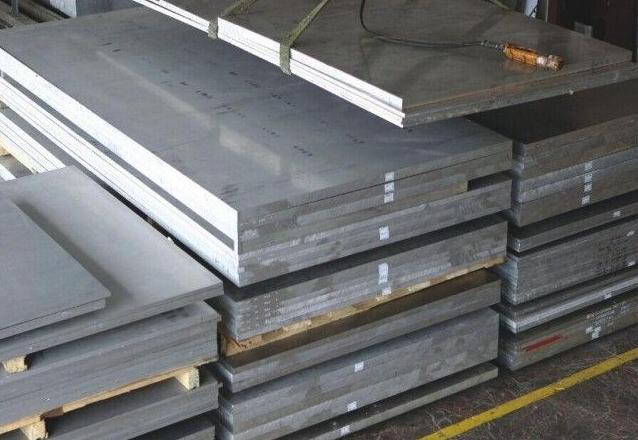How to Choose Aircraft Aluminum Sheet Thickness?
Posté 2025-09-23 06:22:49
0
1KB

Selecting the right thickness of aircraft aluminum sheets is critical for ensuring aircraft safety, performance, and operational efficiency. Aircraft aluminum sheets, known for their high strength - to - weight ratio, are used in various components like fuselages, wings, and interior panels. The wrong thickness can lead to structural failures, increased fuel consumption, or unnecessary weight. Below is a step - by - step guide to help you make the right choice.
1. Understand the Application Requirements
The first step in choosing aircraft aluminum sheet thickness is to clearly define the sheet’s intended use. Different aircraft components have distinct demands, which directly influence thickness selection.
For structural parts such as wing spars and fuselage frames, thickness must prioritize load - bearing capacity. These components bear the aircraft’s weight, aerodynamic forces, and external impacts during flight. For example, a wing spar may require a thicker sheet (often 6 - 12mm) to withstand repeated stress from takeoffs and landings.
In contrast, non-structural parts like interior ceiling panels or cabin partitions focus more on weight reduction and aesthetics. Thinner sheets (typically 1 - 3mm) are sufficient here, as they do not need to support heavy loads and help keep the aircraft’s overall weight low.
2. Consider Load-Bearing and Stress Factors
Aircraft aluminum sheets endure various types of stress during operation, including tensile stress, compressive stress, and bending stress. Thickness directly affects the sheet’s ability to resist these forces.
You need to calculate the maximum stress the sheet will face based on engineering data. For instance, aluminum sheets used in landing gear components experience extreme compressive stress when the aircraft touches down. Thicker sheets (8 - 15mm) are needed to prevent deformation or cracking under such pressure.
Consult aircraft design standards (such as those from the International Air Transport Association, IATA) or structural engineering formulas to ensure the selected thickness can handle the expected stress without exceeding the material’s yield strength.
3. Factor in Weight and Fuel Efficiency
Weight is a key concern in aircraft design, as heavier aircraft consume more fuel and have lower operational efficiency. While thicker sheets offer better strength, they also add unnecessary weight if over-specified.
Strike a balance between strength and weight. For example, in aircraft tail sections, which require moderate strength but minimal weight, a thickness of 3-5mm is often ideal. Using a thicker sheet here would increase fuel costs over the aircraft’s lifespan without significant performance benefits.
Use weight-saving software or design tools to simulate how different thicknesses impact the aircraft’s total weight and fuel consumption, helping you narrow down the optimal range.
4. Refer to Material Standards and Certifications
Aircraft aluminum sheets must meet strict industry standards and certifications (e.g., ASTM B209 for aluminum alloy sheets or aerospace-specific standards like AMS 4000). These standards often specify recommended thickness ranges for different applications.
For example, AMS 4037, a standard for 6061-T6 aluminum sheets (commonly used in aircraft), suggests thicknesses between 0.5mm and 25mm, with specific thicknesses aligned to different load requirements. Choosing a thickness within these certified ranges ensures the sheet meets safety and performance benchmarks, avoiding non - compliant materials that pose risks.
5. Evaluate Environmental and Operational Conditions
The environment in which the aircraft operates also influences thickness choice. Aircraft flying in harsh conditions—such as high humidity, extreme temperatures, or corrosive coastal areas—may require slightly thicker sheets to account for potential material degradation.
For example, aluminum sheets used in aircraft operating near the ocean are prone to corrosion. A 1-2mm thicker sheet can provide a larger corrosion allowance, extending the component’s lifespan. Additionally, aircraft used for long-haul flights, which experience prolonged stress, may need thicker sheets to withstand fatigue over time.
Conclusion
Choosing the correct aircraft aluminum sheet thickness requires a comprehensive analysis of application needs, load-bearing demands, weight efficiency, material standards, and environmental factors. By following these steps, you can select a thickness that ensures safety, optimizes performance, and reduces operational costs. For high - quality, reliable aircraft aluminum sheets that meet all aerospace standards and fit diverse thickness requirements, choose Lanren Aluminum’s aircraft aluminum sheet.
Rechercher
Catégories
- Art
- Causes
- Crafts
- Dance
- Drinks
- Film
- Fitness
- Food
- Jeux
- Gardening
- Health
- Domicile
- Literature
- Music
- Networking
- Autre
- Party
- Religion
- Shopping
- Sports
- Theater
- Wellness
Lire la suite
Regional Outlook: Steel Cord Market in Asia-Pacific, Europe, and North America
The chemical sector remains resurgent, delivering critical inputs in agriculture, healthcare,...
to have there Hermes was really important to me
Rather than leaving you to sift through your closet with a pile of clothes in your wake, we...
PCIe 4.0 Retimer Adoption Trends Across Enterprise and Cloud Segments
The global PCI Express (PCIe) 4.0 Retimer market, which is the heart of digital...
Vinyl Records as Collectibles: Investment Potential and Market Value
The consumer goods industry is always a reflection of global consumption habits, driven...
Electronic Flight Bag (EFB) Market Report 2032 Edition: Industry Market Size, Share, Growth and Competitor Analysis- The Report Cube
Electronic Flight Bag (EFB) Market Overview 2026-2032
According to the latest report by The...


